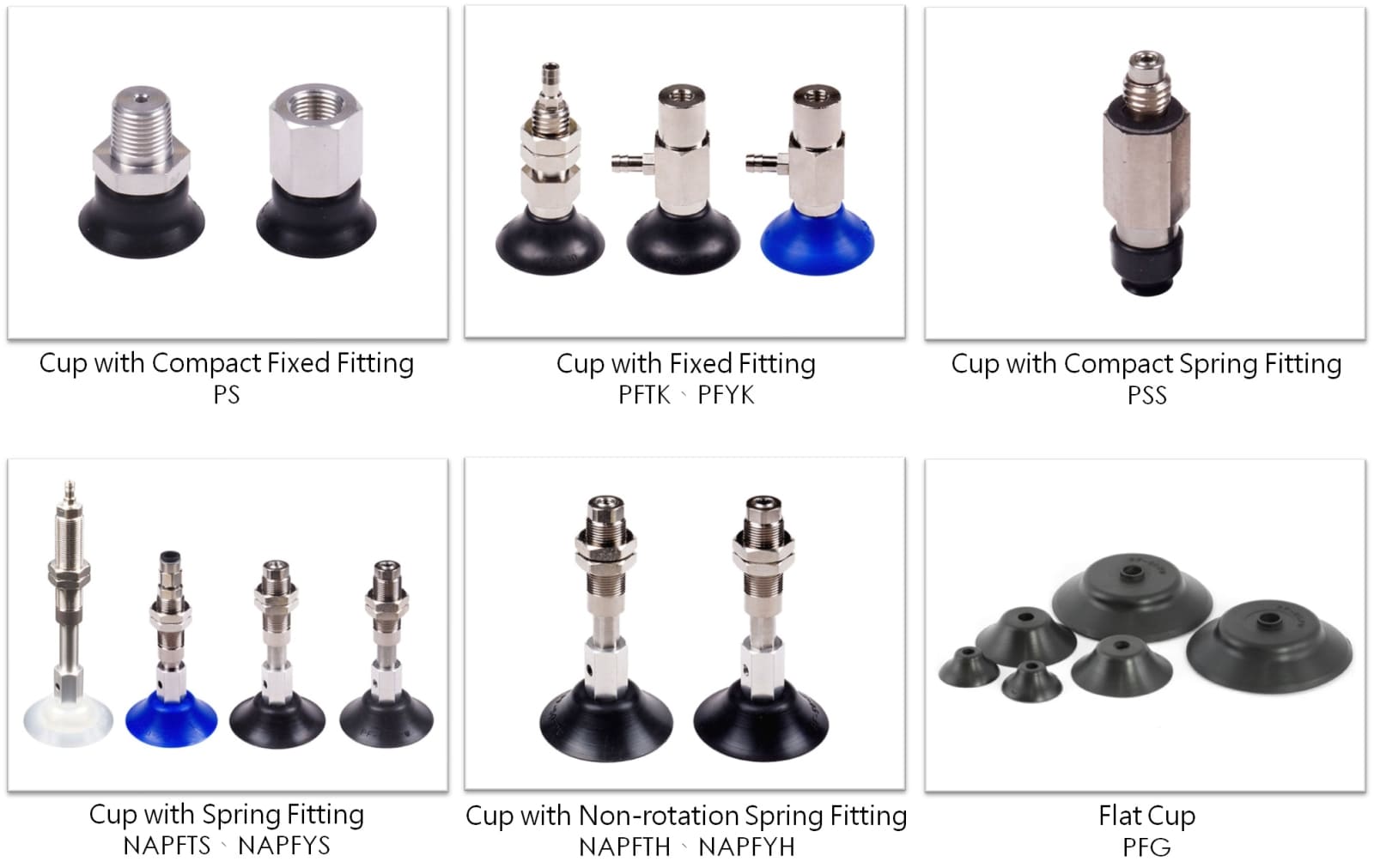

- All Products
- Pneumatic Series
- GENTLE Pneumatic Fittings
- GENTLE Ionizer
- CONVUM Ltd.
- FUJIKURA
- FUJI LATEX Co., Ltd.
- KOGANEI Corporation
- iB series
- Air Cylinders, Hands
- Air Valves
- Air Filters, Regulators, Pressure Gauges
- Flow Rate Sensor Switches, Plachain Ducts, Pressure Switches
- Vacuum Equipment, Pads
- Electric Actuator
- Environmental Hygiene Equipment
- Static Electricity Removal
- Fluororesin Products
- Fixed Discharge Pump
- Medium Control Equipment
- Pulse Blow Series
- NKE Corporation
- TAKEX
- Dispensing Series
- General-Purpose Flat Pads: Simple, reliable construction for smooth, flat, rigid workpieces.
- Broad Applicability: Ideal for glass, sheet metal, and hard plastics that are dimensionally stable.
- Largest Size Coverage: ø1.5, 2, 2×4, 2.2×4.2, 3.5, 3.5×7, 5, 6, 8, 10, 15, 20, 25, 29, 35, 40, 50, 60, 80, 93, 120, 150, 200 mm, spanning micro parts to large panels.
- Material Portfolio: N (NBR), S (Silicone), U (Polyurethane), F (FKM), NE (Conductive NBR), SE (Conductive Silicone)—match media, temperature, wear, and ESD needs.
- Stable for Long Runs: Fast seal initiation and consistent holding force support high-frequency pick-and-place.
- Applications: Electronics/optic modules, metal & glass panel transfer, cosmetic plastic parts, labeling/packaging, and general FA lines.

Q1: What parts are PF pads best for?
A: Smooth, flat, rigid parts—glass, sheet metal, and hard plastics with low deformation risk.
Q2: What sizes are available?
A: A full lineup from ø1.5–200 mm, including small bar/rectangle sizes (2×4, 2.2×4.2, 3.5×7, 15×45, etc.).
Q3: How do PF pads differ from thin-lip pads?
A: PF is a general flat pad for rigid parts; thin-lip types suit light, easily deformable materials (films, thin sheets).
Q4: How should I choose among N/S/U/F/NE/SE materials?
A: N: general/oil resistant; S: softer, minimizes marking, good at low temp; U: wear resistant, quick rebound; F: heat/chemical resistant; NE/SE: conductive for ESD control.
Q5: Are they suitable for high-speed automation?
A: Yes. Stable sealing supports short cycle times—verify vacuum build/holding on your tool for ultra-fast stations.
Q6: How do they perform on rough or porous surfaces?
A: PF targets smooth surfaces. For rough/porous parts, consider bellows/foam types, or upsize and increase flow.
Q7: Any tips for micro sizes (ø1.5–5 mm)?
A: Ensure clean, flat contact; manage acceleration; check line losses (tubing/orifice) to maintain adequate vacuum.
Q8: When should I use conductive grades (NE/SE)?
A: In ESD-sensitive processes; pair with proper grounding and monitoring.
Q9: What are the care and replacement guidelines?
A: Clean lips regularly; avoid prolonged strong-solvent exposure. Replace if hardened, cracked, or if sealing degrades.
Q10: Can PF pads replace my existing flat pads one-for-one?
A: Usually yes—confirm thread/interface, space envelope, and material compatibility; pilot before mass deployment.





